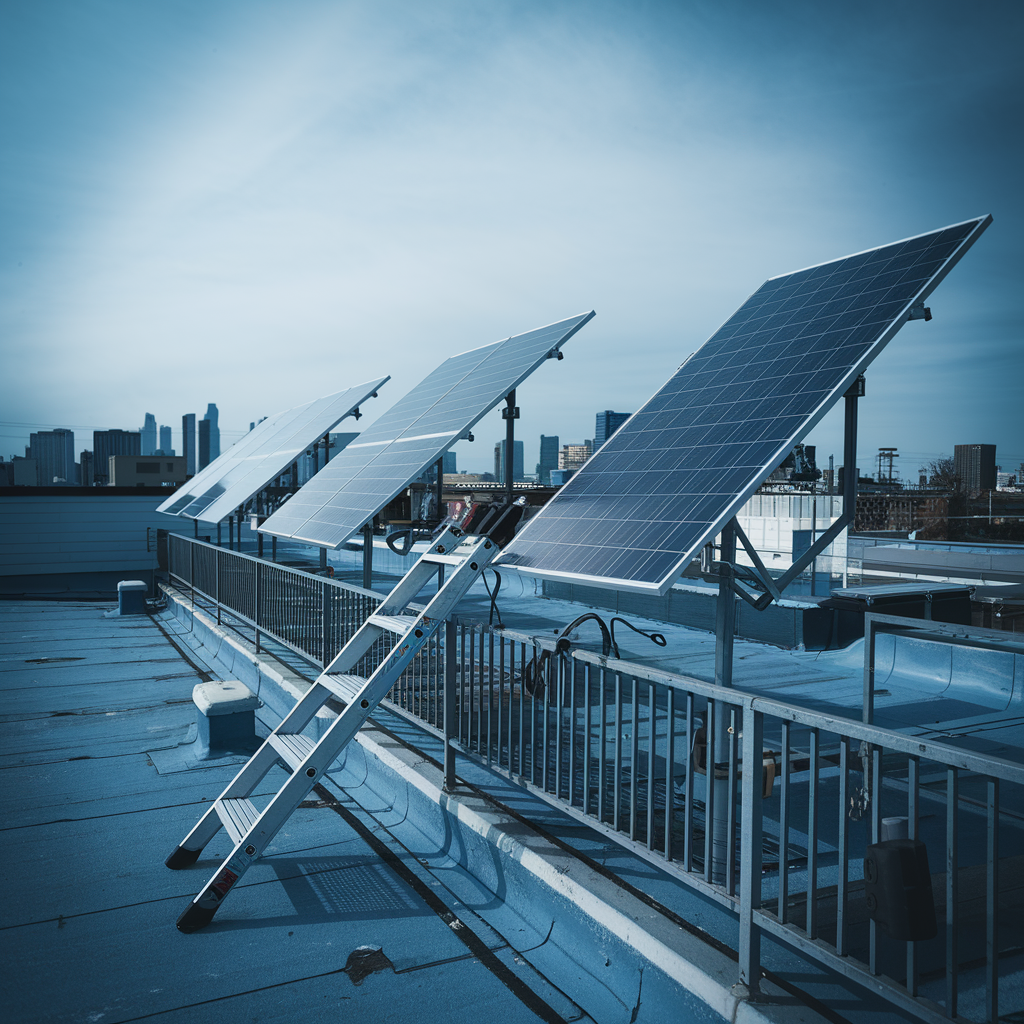In cities with high population densities and ever-growing energy demands, managing electricity sustainably has become a pressing issue. Urban areas often experience energy spikes during peak hours, putting immense pressure on already stressed grids. This challenge is amplified by the increasing use of electrical devices, electric vehicles, and air conditioning systems. As a result, cities are seeking innovative solutions to relieve the strain on power grids while ensuring residents have access to reliable and affordable energy.
One promising solution is the Balcony Energy Storage System. These compact, decentralized energy storage systems are designed to be installed on balconies or rooftops of urban buildings, making them perfect for high-density areas with limited space. Paired with solar panels, these systems allow individual households to store energy during periods of low demand and use it when electricity prices peak or during grid outages. This blog explores how Balcony Energy Storage Systems are transforming urban energy management, reducing pressure on city grids, and helping residents save on energy costs while enhancing energy independence.

1. The Urban Energy Crisis: Why Cities Need Innovative Solutions
1.1 Rising Energy Demand in Cities
Cities are home to over 55% of the world’s population, and this figure is projected to increase to nearly 70% by 2050. With this growth comes a corresponding rise in energy consumption. Urban areas are responsible for nearly 75% of global energy consumption, and as cities expand, so do their energy demands. This trend places significant pressure on aging electrical grids, which were not designed to handle current consumption levels, much less the anticipated surge in demand.
1.2 The Limits of Traditional Energy Grids
City grids are often centralized, meaning they rely on a few large power plants to distribute electricity across vast urban areas. This makes them vulnerable to system failures, blackouts, and inefficiencies. As energy consumption fluctuates throughout the day, especially during peak hours, cities often struggle to maintain a stable supply. The result is increased energy costs for consumers and a growing risk of grid instability.
1.3 The Role of Renewable Energy in Urban Areas
Many cities are turning to renewable energy, such as solar and wind, to address these challenges. However, renewables are inherently intermittent—solar energy is only available during the day, and wind patterns are unpredictable. This intermittency poses a challenge for cities that need a constant and reliable energy supply.
This is where Balcony Energy Storage Systems come into play. These systems store energy generated by solar panels during the day, making it available for use during peak demand periods or at night. By decentralizing energy storage across individual homes and apartment buildings, cities can alleviate pressure on the grid while promoting the use of clean, renewable energy.
2. What Is a Balcony Energy Storage System?
A Balcony Energy Storage System is a compact energy storage solution designed specifically for urban environments. It typically consists of a lithium-ion battery, an inverter, and a controller that manages the flow of electricity between the battery, solar panels, and the grid. The system can be installed on balconies, rooftops, or in small storage spaces, making it ideal for dense urban areas where space is limited.
2.1 How It Works
- Solar Energy Generation: Solar panels installed on the balcony or rooftop collect sunlight and convert it into electricity.
- Energy Storage: Excess energy that isn’t immediately used by the household is stored in the battery.
- Energy Usage: During periods of high energy demand (typically in the evening or during grid outages), the stored energy is used to power the household.
- Grid Feedback (Optional): In some cases, households can sell excess energy back to the grid, further reducing their electricity costs.
The system is designed to be easy to install and maintain, making it a practical solution for urban residents who want to reduce their reliance on the grid and lower their energy bills.
3. Benefits of Balcony Energy Storage Systems for Urban Residents
3.1 Reducing Energy Costs
One of the key advantages of Balcony Energy Storage Systems is their ability to help urban residents save on electricity costs. In many cities, energy prices fluctuate throughout the day, with higher rates during peak hours. By storing energy during low-demand periods and using it during expensive peak hours, residents can significantly reduce their electricity bills.
Energy Cost Comparison: Without vs. With Balcony Energy Storage System
| Energy Use | Without Storage | With Storage |
|---|---|---|
| Peak Hour Cost (5 PM – 9 PM) | €0.30/kWh | €0.00/kWh (using stored energy) |
| Off-Peak Hour Cost (9 AM – 5 PM) | €0.15/kWh | €0.15/kWh (charging battery) |
| Monthly Savings | €150 | €90 |
By using stored energy during peak hours, urban residents can achieve 30-40% savings on their monthly energy bills.
3.2 Enhancing Energy Independence
Another significant benefit of Balcony Energy Storage Systems is the increased energy independence they provide. City grids are often vulnerable to blackouts, especially during extreme weather events or periods of high demand. With a storage system in place, residents can continue to power their homes even during grid outages, ensuring a reliable and uninterrupted electricity supply.
3.3 Supporting the Urban Energy Transition
Cities around the world have set ambitious targets for reducing carbon emissions and transitioning to renewable energy. Balcony Energy Storage Systems play a crucial role in this transition by enabling more households to adopt solar power and store excess energy for later use. This helps cities reduce their reliance on fossil fuels while promoting the widespread use of clean, renewable energy.
4. Case Studies: Balcony Energy Storage Systems in Action
4.1 Case Study 1: Reducing Grid Dependency in Berlin
In Berlin, a city with a high population density and significant energy demand, Balcony Energy Storage Systems have been gaining popularity among apartment dwellers. One resident, Anna, installed a small system on her apartment balcony along with a 2 kW solar panel setup. Within six months, Anna saw her electricity bills drop by 35%. During peak hours, she used energy stored in the system, and during off-peak hours, she charged her battery for the next day.
- Energy Savings: Anna reduced her grid consumption by 40%, significantly lowering her monthly bills.
- Environmental Impact: By using solar energy and storing it for later use, Anna reduced her carbon footprint, contributing to Berlin’s goal of cutting emissions by 50% by 2030.
4.2 Case Study 2: Alleviating Grid Pressure in Amsterdam
Amsterdam, another city grappling with rising energy demands, has encouraged residents to adopt decentralized energy solutions. Balcony Energy Storage Systems have been instrumental in reducing the city’s grid pressure during peak hours. A large apartment complex in the city center installed several storage systems for its residents, allowing them to store excess solar energy and use it during the evening when demand spikes.
- Grid Relief: The complex reduced its collective grid consumption by 20% during peak periods.
- Cost Reduction: Residents saw a 25-30% decrease in their electricity bills, thanks to the ability to store and use energy locally.
4.3 Case Study 3: Energy Autonomy in New York City
In New York City, where energy costs are among the highest in the world, Balcony Energy Storage Systems have helped residents achieve greater energy autonomy. One high-rise building installed storage systems on balconies across multiple floors, allowing residents to store solar energy and reduce their reliance on the grid. During a heatwave, when the city experienced rolling blackouts, the building maintained power for all critical systems using its stored energy.
- Energy Security: Residents enjoyed uninterrupted power during blackouts, thanks to their storage systems.
- Energy Cost Savings: By using stored energy during peak hours, the building reduced its overall energy costs by 35%.
5. The Future of Balcony Energy Storage Systems in Cities
As cities continue to grow and energy demands rise, the need for innovative solutions like Balcony Energy Storage Systems will become even more critical. These systems offer numerous benefits, not just for individual homeowners but for entire cities looking to modernize their energy infrastructure and reduce their carbon footprint.
5.1 Wider Adoption and Integration
Cities across the globe are starting to recognize the potential of decentralized energy storage. Governments and municipalities are introducing incentives and subsidies to encourage the adoption of solar panels and energy storage systems. As more urban residents install these systems, the collective impact on the grid will be significant.
- Incentives: Several cities are offering tax credits, rebates, and subsidies to residents who install solar panels and energy storage systems.
- Grid Modernization: As more homes and buildings adopt these systems, cities can shift toward a more decentralized energy model, reducing the need for large, centralized power plants and minimizing the risk of outages.
5.2 Technological Advancements
The technology behind Balcony Energy Storage Systems is continually evolving, with advancements in battery efficiency, energy management systems, and integration with smart grids. These improvements will make the systems even more effective at reducing energy costs, increasing energy independence, and alleviating pressure on city grids.
- Battery Technology: Advances in battery technology are increasing the storage capacity and lifespan of these systems, making them even more cost-effective for urban residents.
- Smart Energy Management: Future systems will integrate more seamlessly with smart grids, allowing for more efficient energy distribution and consumption.
5.3 The Role of Businesses in Promoting Adoption
Businesses, particularly those in the construction, real estate, and energy sectors, have a critical role to play in promoting the adoption of Balcony Energy Storage Systems. By incorporating these systems into new buildings, retrofitting existing structures, and offering financing options, businesses can help accelerate the transition to a more sustainable urban energy model.

6. Conclusion: Balcony Energy Storage Systems as the Future of Urban Energy
The rise of Balcony Energy Storage Systems is transforming the way cities manage energy. As urban populations grow and energy demands increase, these systems provide an innovative, decentralized solution that helps residents save money, reduce their environmental impact, and enhance their energy independence.
By offering a practical and affordable way to store and use solar energy, Balcony Energy Storage Systems are not only helping individual residents but also contributing to the broader goal of creating more resilient and sustainable cities. As the technology continues to advance and adoption rates increase, these systems will play an essential role in the future of urban energy management.
Whether you’re a resident looking to cut your electricity bills or a business exploring new ways to promote sustainability, Balcony Energy Storage Systems offer a powerful solution for the challenges of modern urban living.
7. Final Thoughts: Why Now Is the Time to Invest in Balcony Energy Storage Systems
With rising energy costs, increasing grid instability, and growing demand for sustainable solutions, there has never been a better time to invest in Balcony Energy Storage Systems. These systems offer a compelling combination of cost savings, energy independence, and environmental benefits, making them the ideal solution for urban residents and businesses alike.





